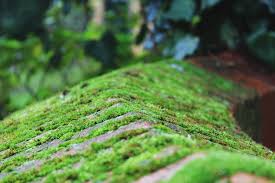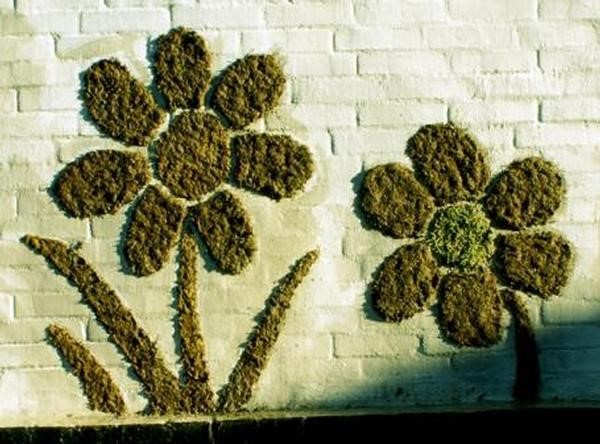 “The rolling stone rolls echoing from rock to rock; but the rolling stone is dead.
“The rolling stone rolls echoing from rock to rock; but the rolling stone is dead.
The moss is silent because the moss is alive.” ~ G.K. Chesteron
If you love cultivating a garden, chances are fairly good that you also love the creeping, carpeting moss that naturally comes to life (and along for the botanical ride) in any of the damp spaces, crevices, and shaded areas between your hearty perennials, rocks, stone walls, and other little spots where most plants don’t grow.
A gardener who doesn’t love moss is like a potter who doesn’t want to work with clay. What’s not to love about moss? It has increasingly replaced my succulent and cacti obsession, which quite frankly, was no easy feat.
Cultivating moss in any garden adds a level of sophistication to your novice or expert-level green thumb repertoire. Believe it or not, growing moss requires very little effort. Moss does best in un-fertile, compacted soils, where other plants don’t fair as well, so it’s the perfect little filler plant that glues the whole garden together. It’s very satisfying to watch it spread and sprawl around stone walkways and borders. Moss has no roots and does not seed or flower. It’s made up of spores that divide and multiply instead. Many plants do not thrive in dense soil because of the lack of air, water and nutrients moving through it to the roots. Soil compaction and hard surfaces prevent good drainage, which actually makes them perfect for moss growth.
Propagation is easy! Gently lifting and moving sheets and pieces of moss into any “ideal” location does the trick, as long as it’s cared for fairly regularly during the first few weeks of transition. To prepare an area for moss, simply remove all weeds and roots from a desired location, rake and water the cleared soil, and then simply plop a bit of moss down on top of it. Pierce it with a skinny stick to hold it in place while it establishes. Once it does, there is no other real care required. In the shadier parts of your yard where grass doesn’t want to grow, why fight a never-ending battle? Cultivating a layer of ground covering moss solves this problem quickly and makes those bare spots green, lush, and beautiful without a lot of work. A big bonus is that there is never any mowing necessary to maintain it!
Here’s something fun to try: Moss Graffiti!
To create moss graffiti in a garden, you will need to start with a moss “slurry.” Gather the following items: A patch of moss, buttermilk, water, a bowl, a potato masher, and a paintbrush.
First, go find a patch of moss. Be cognizant of not taking too much from any one spot. Moss is found absolutely anywhere – parking lots, your own back yard, a ditch, the woods, under trees, along rock walls, etc.
Place the moss in a bowl and add some buttermilk and water.
Mash it all up with the potato masher. It should be on the thicker side like loose mud.
Use the paint brush to apply it to any “ideal” (dark, damp, shady, etc.) surface where you want to grow moss. You can pour it, paint a picture, or just play around with some fun lettering or stencils. It does best in places that stay moist and cool. For example, painting a simple heart on a rock in the woods that borders your backyard is a fun way to add a bit of whimsy to your surroundings! And trust me, it will also make you a little happier every time you look at it.
After you are done pouring and painting, mist it once in a while to keep it moist, and in a few weeks, you’ll see moss filling in all over the surfaces. The spores in the slurry will form moss as long as you keep it wet during the first few weeks.
Check out these fun “moss on purpose” projects:

Moss covering a stone wall in uniform lines!

Fun phrases can make a wall pop with life!

Moss flower ART will beautify an otherwise ugly wall!
Some Quick Moss Facts:
- Moss is always green. It’s not brown unless it’s dead, and it’s very tough to kill.
- Moss never has to be mowed.
- It grows in the shade, on surfaces not conducive for other plants.
- Moss is an indicator of pollution. It grows only in clean environments.
- It lacks roots, stems and flowers.
- Moss was used to heal wounds during WWI.
- Modified mosses are currently being cultivated as a planet saving antidote for green house gas emissions.
- Moss nourishes other plants.
Moss cultivation resources:
I like to think of cultivating moss as bringing life and a little bit of winsome, green magic to the forefront of my garden. I enjoy all my living, breathing, growing, spreading plants, and moss is simply another lovely addition to the landscape that brings me peace and serenity, because it requires hardly any care. Maybe it’s a selfish thing – the fact that I can “set it and forget it” reduces the complication, resentment, weeding, and toil that often comes along with difficult gardening projects. I can just enjoy watching it grow. Moss is simple, and yet it makes a brilliant statement because it achieves a great deal without fuss or fanfare. What’s not to love about moss?
Wow Kim, you out did yourself with this one, loved it!
(I want to do some ‘mossing’ around my yard)
I love everything about moss…especially the fact that it just appears. 🙂